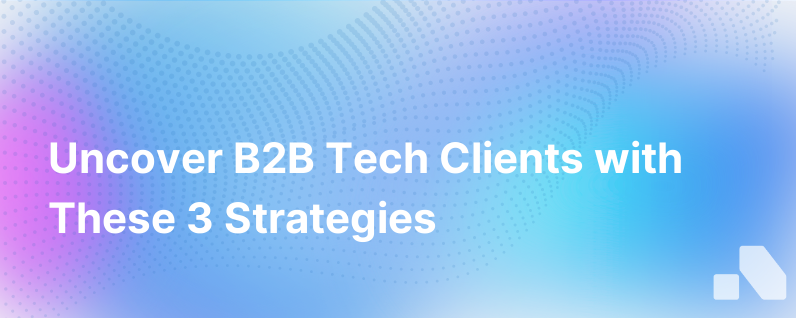
In the B2B tech industry, pinpointing and understanding the customer base of other companies can yield a wealth of strategic insights. For sales and marketing professionals, investors, and competitive analysts alike, discerning who is buying from your competition, how satisfied they are, and why they chose a particular vendor can inform your sales approach, product development, and overall business strategy.
In this article, we'll unveil three established methods for uncovering the customer lists of B2B tech companies. These techniques range from thorough investigative work to leveraging advanced technology platforms like Aomni.
1. Utilize Publicly Available Resources
The digital footprint of a company can be telling. B2B tech companies often showcase customer testimonials, case studies, or logos on their websites as social proof. This is the first layer of investigation that requires meticulous attention to detail and comprehensive research.
Customer Testimonials and Case Studies: By analyzing case studies and testimonials, you can gain keen insights into the customer's industry, the challenges they faced, and how the service or product provided by the company has implemented a solution.
Press Releases and News Articles: Announcements of new partnerships, collaborations, or notable deals often make their way into press releases and news coverage. Setting up Google Alerts with competitors' names or following relevant industry media can lead to regular updates on customer acquisitions by your competitors.
Job Listings and Employment Data: Occasionally, clues about a company’s customer base or upcoming projects can be gleaned from their job postings. Listings may reference specific client work or required experiences that give hints about their clientele.
Webinars and Conferences: Companies frequently partner with customers to host webinars or present case studies at industry conferences. Monitor event agendas or register for webinars to learn about the partnerships your competitors are publicizing.
2. Conduct Social Listening and Network Engagement
The proliferation of social media and professional networking sites has opened the door for social listening to be a potent tool for intelligence gathering.
Professional Social Networks: LinkedIn is both a virtual Rolodex and a broadcasting platform. By analyzing the connections and activities of employees from competitive firms, you can infer potential customer relationships, especially when personnel endorse one another or interact frequently within groups or on posts.
Social Media Platforms: Twitter, Facebook, and industry-specific forums can reveal the customer base of a B2B tech company when users openly discuss their experiences with certain products. Hashtag searches and monitoring of company pages can illuminate who is engaged with the brand.
Review and Rating Sites: Sites like G2 Crowd, Capterra, and TrustRadius where customers leave reviews can also offer a look into who uses certain B2B solutions. Current customers often detail their experiences which not only reveals who they are but also provides insight into what customers appreciate or dislike about the product.
3. Leverage Advanced Tech Platforms and Software
Harnessing the capabilities of Sales Intelligence Platforms and Data Enrichment Tools can transform the challenging task of finding B2B customers into a streamlined process.
Sales Intelligence Platforms: Platforms such as Aomni provide actionable competitive insights and real-time account research. By aggregating and synthesizing data, these platforms can uncover direct and indirect evidence of customer relationships.
Customer Data Platforms (CDPs): Sophisticated Customer Data Platforms can integrate with various data sources to provide a holistic view of potential customer relationships through a combination of behavioral data, transactional records, and customer interaction histories.
Data Enrichment Tools: These tools refine existing datasets to add missing information or enhance the data with additional insights. They help complete the puzzle by providing details that could be critical for determining customer relationships.
IP-Address Tracking Software: Software solutions that identify and track corporate IP addresses visiting your own or your competitors' websites can sometimes hint at potential customer interest, offering a backdoor glimpse into a company's client engagements.
Additional Considerations
It's important to approach your intelligence gathering ethically and legally. Respect privacy laws and policies when conducting research. It's also critical to remember that while you can gather much from the clues detailed above, they can only offer a partial picture and may require further validation.
Moreover, none of this information is static. Customer bases evolve, as do the relationships and experiences that underpin them. This means that your research into B2B tech company customers should be ongoing.
The Larger Picture: Strategic Application
Finding out who a company's customers are is just the first step. The smart application of this information is where the value unfolds. Understand not only "who" but also "why" these customers selected your competitors. Analyzing customer choice drivers, coupled with holistic account planning and engagement strategies fulfilled by platforms like Aomni, forms the bedrock of a strong competitive strategy.
By understanding the customer landscape of your competitors, your B2B tech company can more effectively position its offerings, anticipate market trends, and tailor your outreach messaging to the needs and pain points that resonate most with those in your industry.